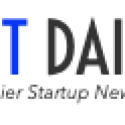Politics
5 Remote Working Tips for the Modern Workplace – ReadWrite
Published
3 years agoon
By
Drew Simpson
It’s not an exaggeration to say that the novel coronavirus (COVID-19) has changed everything, including how we work. Many people have become remote employees, at least temporarily, for the first time in their careers.
While remote work has many benefits, it can be a difficult working arrangement to adjust to for some people — especially when other family members and/or roommates have been forced into quarantine at home. Home and work-life are constantly colliding.
We’re here to help and have created this brief guide with remote working tips to help you be as productive as possible during this new remote working era. Let’s dive in!
The Remote Working Era
Remote work has been growing in popularity for some time. In fact, in 2019 48% of U.S. workers worked remotely at least once per week. But since the COVID-19 outbreak, pretty much everyone has become a remote worker.
While the current circumstances are quite undesirable, remote work, in general, has numerous benefits — even as we all shelter in our homes and practice social distancing:
- Most employees are 22% more productive when working from home.
- The average person has 43% less meetings than they did before the pandemic.
- Most people have 2.5 more hours in their schedules than they did before COVID-19.
These are promising stats and proof that there is a silver lining, albeit a small one, to the current pandemic we’re all facing. We just have to take advantage of it.
5 Remote Working Tips for the Modern Workplace
Remote workers have the potential to be more productive than their in-office counterparts. But you have to follow a few tips, tricks, and best practices to reach this level of efficiency. Here are five remote working tips you can implement right now to become super productive during the COVID-19 pandemic and beyond.
1. Remove Distractions
Distraction is an ever-present concern, whether you’re working remotely or in-office. In fact, one in three millennials list chatty co-workers as their biggest distractions in the workplace. Now that we’re all working from home due to social distancing best practices, chatty co-workers are much less of a concern. But self-quarantined family members can make it hard to focus, too.
What’s the game plan? How can you concentrate on your work for solid stretches of time, even when the world around you seems intent on distracting you? We have a few suggestions:
- Lock Your Door: This is one of the most important things you can do to avoid distractions. Why does this work so well? Because you’re physically blocking distractions from entering your workspace. Your family members won’t be able to just burst in and ask you a million questions that take your mind away from the task at hand.
- Wear Headphones: We also recommend working with headphones on. Again, this is another way to block out distractions. If you can’t hear what’s going on in the room next to your home office, you won’t be tempted to postpone your work and engage with the commotion. Similarly, when your family and/or roommates see you in headphones, they’ll be much less likely to interrupt you unless absolutely necessary.
- Turn Off the TV: You know what really kills remote productivity? Netflix, Hulu, Disney+… The streaming networks are so convenient and will suck you in if you’re not careful. For most people, it makes more sense to never turn the TV on during work hours, that way they’re not tempted to watch “just one more episode!”
- Mute Your Notifications: If possible, turn off your phone and log out of your email while doing your most important work. A text or email, even if it’s job-related, is a distraction that will keep you from doing your best work. If you’re not willing to turn off your phone and log out of your email because you need to be reached in case of an emergency, try silencing your notifications so that you’re not breaking focus as often.
- Prioritize Deep Work: Deep work is a popular phrase that was originally coined by Cal Newport in his 2016 book of the same title. According to Newport, deep work is “the ability to focus without distraction on a cognitively demanding task.” In other words, it’s the practice of setting aside time to focus on one (keyword, one) important task. By doing this, you naturally eliminate distractions.
If you follow these five quick tips, you’ll be able to quickly reduce distractions and focus on your work for longer stretches of time, guaranteed.
2. Keep a Standard Routine
It can be tempting when working remotely to wake up late, wear your pajamas all day, and start work whenever you feel like. You don’t have to commute to the office, so what’s the harm in a more relaxed schedule and work wardrobe? A lot actually…
Many experts encourage remote workers to keep a standard routine that’s very similar to the office schedule they’re accustomed to. Get up in the morning, take a shower, get dressed, etc.
For some folks, setting a standard routine is difficult when working from home. Without a standard time to clock-in, it’s too easy to base your day around how you feel in the moment. But this rarely leads to high levels of productivity.
Instead, follow these three tips to help you keep a standard routine:
- Know Yourself: When are you most productive? Some people work best in the morning, others excel in the midnight hours. Neither is right or wrong, they’re just different. The key is knowing how you work best and then planning your schedule around your natural tendencies and preferences.
- Have an Accountability Partner: Just because you work best in the morning, doesn’t mean you’ll automatically be excited to get up, get ready, and start working every morning. That’s why having an accountability partner can be so effective. If you know that your colleague is expecting you to check-in at a specific time before work, you’ll be more incentivized to get yourself out of bed on time.
- Reduce Meetings: We suggest scheduling company and team meetings for specific days only. Meetings are widely known to be incredibly unproductive for most organizations. But you can’t simply not meet. Instead, plan meetings for specific days and then give your team the autonomy to complete their work by the required deadlines.
- Have Fun! It can be easy to forget to have fun, but its important to help with mental health.
3. Use Calendar Blocking

Calendar blocking is the practice of blocking out time on one’s calendar to focus on specific tasks. Simple, right? Unfortunately, very few people actually do this consistently. Here are a few tips to help you properly calendar block:
- Prioritize: There are a million things you could do every day. But some projects and tasks will be more important than others. You need to prioritize these activities and make sure you block off enough time on your calendar to accomplish them.
- Eliminate: Look at your list of tasks and ask yourself, “What does not need to be on my calendar right now?” After you answer that question, cut any tasks (especially meetings!) that don’t fit your current schedule or aren’t one of your immediate top priorities.
- Prepare: You want to be ready to hit the ground running as soon as you begin working. This means starting the day with preparation is unproductive. Before you clock-out, decide what you’re going to work on and when the next day. Then block out time for each one of those tasks in your calendar.
- Review: There’s one final task you should accomplish before you shut down your computer and exit your home office: a daily review. How was your day? Did you achieve everything you planned to? Were you able to stick to your calendar? Now use these insights to plan an even better day for tomorrow.
4. Take Productivity Breaks
As the old saying goes, “all work and no play makes Jack a dull boy.” While it may seem counterintuitive, breaks throughout the day will actually increase your productivity levels. They’ll also make your day more enjoyable, which is equally as important and worth mentioning.
But breaks can be tricky when working remotely for a couple of reasons.
- First: It’s easy to get so wrapped up in your work that you forget to stop for a quick breather. When working in a regular office, this is less of an issue because you’re usually able to see your colleagues take occasional breaks and are reminded to do the same.
- Second: Some remote workers are afraid to take breaks at home because it’s so easy to become distracted while doing so. What if your significant other has the TV on in the living room and you hear it when venturing to the kitchen for a snack? Do you have the willpower not to sit down and watch with them? Not everyone does. To combat this issue, use the techniques we outlined above in the “Remove Distractions” section.
It’s crucial that you don’t just try to take breaks, but you actually schedule time for them in your calendar. That’s right, use the calendar blacking strategy for breaks too!
If you’re wondering how to take a productive break, we have a couple of ideas for you:
- Go Outside: Enjoy the sun and listen to the birds. Sip a cup of coffee or tea while you’re out there or consider meditating if that’s your thing. Whatever you do, plan two or three times (at least) during the day that you can break from your work and reset in nature.
- Leave Your Work Zone: What if it’s raining and you can’t go outside? Simply go to another room or area of your home. This physical split from your normal work environment will help your brain “turn off” for a few minutes and rest.
- Play a Team Game: Get your colleagues involved in your break time and play a game with them while you all rest and rejuvenate. There are plenty of apps that will allow you and your remote teammates to play trivia, go on digital scavenger hunts, and more. To really up the ante, divvy out rewards for those who win the games!
Breaks, as crazy as it sounds, will definitely help you become more productive as you work remotely. Give them a try and see for yourself!
5. Manage Your Technology
Technology can be a great asset when it comes to productivity and time management. From communication tools to automation solutions, allow the various software applications available help you get more done in less time. Here are a few top options in this regard:
- CloudApp: CloudApp combines screen and webcam recording, GIF creation, and screenshot features into one solution that makes team collaboration between remote employees quick and easy. Why send a long-winded email when you can simply record yourself explaining your thoughts or an annotated image pinpointing your exact areas of concern?
- Calendar.com: Calendar is a popular calendar app used by industry heavyweights like Fox News, Forbes, and CNN. Your most precious asset is your time. This app helps you spend it wisely by allowing users to quickly schedule meetings and block off time for productive deep work. It also features AI and machine learning to tailor the Calendar experience to each user and detailed analytics so you can discover exactly how you’re spending your time and refocus your efforts when needed.
- Slack: In all likelihood, your organization has been using Slack for years. Now that your entire team is working remotely, it’s an even more valuable tool. If you’re not familiar with it, users can converse with each other via text, voice, and video chat; organize conversations into specific channels; and easily search past conversations with Slack’s handy searchable history feature.
- Zoom: Zoom has held the title of “most popular video conferencing app” for quite a while. But ever since the novel coronavirus pandemic began, usage of the tool has really exploded — with good reason. Zoom is a great way to connect with your team and host meetings. It also comes with some useful features including HD audio and video, meeting transcripts, and virtual backgrounds.
- PandaDoc: We all create, send, and sign documents regularly. PandaDoc will help you do it much more efficiently with its suite of time-saving features that include customizable templates, a drag and drop editor, esignature capability, convenient document storage, and integrations with other top tools.
- Google Docs: Many companies already use Google Docs to craft blog posts, proposals, and other written documents; then easily send them to each other. But if your organization doesn’t use the tool to collaborate on specific projects as well, it’s missing out. Google Docs is a quick and easy way to work with your team and get writing jobs done faster than ever before.
- Project Management Apps: Tools like Trello, Asana, and Airtable help keep teams on the same page and focusing on the right goals. They also allow colleagues to converse about projects, send important files to each other, and more. We suggest researching each of these three apps in greater detail (if you aren’t already using one of them) and choosing the tool that best fits your team’s needs.
At least a piece of the modern workplace is remote. These tips will help you to maximize your place in the future of work.
Top Image Credit: kelly fairytale; pexels
Joe Martin
VP of Marketing
Joe Martin is currently the GM and VP of Marketing at CloudApp, a visual collaboration tool. He has more than 13 years of experience of marketing in the tech industry. Prior to his role at CloudApp, Martin was the Head of Social Analytics at Adobe where he led paid social strategy and a research team providing strategic guidance to organizations within the company. He has an M.B.A. from the University of Utah’s David Eccles School of Business, Executive education in Entrepreneurship from Stanford Graduate School of Business, a B.S. in Finance from the University of Utah and a digital marketing certificate from The Wharton School of Business at the University of Pennsylvania. His work has been published in the Associated Press, Wall Street Journal, NY Times, and other top tier outlets.
You may like
-


Return to the Office: Trends and Tips to Make You a Success
-


3 Travel Tips for the Female Executive Traveling Solo
-


Vision AI: Prevent Fire and Smoke Hazards in the Workplace
-


Ten Ways To Save Money & Budget When Working From Home
-


How Does Technology Improve Workplace Safety?
-


Using AI and Big Data to Create a Workplace that Appeals to Gen Z
Politics
Fintech Kennek raises $12.5M seed round to digitize lending
Published
7 months agoon
10/11/2023By
Drew Simpson
London-based fintech startup Kennek has raised $12.5 million in seed funding to expand its lending operating system.
According to an Oct. 10 tech.eu report, the round was led by HV Capital and included participation from Dutch Founders Fund, AlbionVC, FFVC, Plug & Play Ventures, and Syndicate One. Kennek offers software-as-a-service tools to help non-bank lenders streamline their operations using open banking, open finance, and payments.
The platform aims to automate time-consuming manual tasks and consolidate fragmented data to simplify lending. Xavier De Pauw, founder of Kennek said:
“Until kennek, lenders had to devote countless hours to menial operational tasks and deal with jumbled and hard-coded data – which makes every other part of lending a headache. As former lenders ourselves, we lived and breathed these frustrations, and built kennek to make them a thing of the past.”
The company said the latest funding round was oversubscribed and closed quickly despite the challenging fundraising environment. The new capital will be used to expand Kennek’s engineering team and strengthen its market position in the UK while exploring expansion into other European markets. Barbod Namini, Partner at lead investor HV Capital, commented on the investment:
“Kennek has developed an ambitious and genuinely unique proposition which we think can be the foundation of the entire alternative lending space. […] It is a complicated market and a solution that brings together all information and stakeholders onto a single platform is highly compelling for both lenders & the ecosystem as a whole.”
The fintech lending space has grown rapidly in recent years, but many lenders still rely on legacy systems and manual processes that limit efficiency and scalability. Kennek aims to leverage open banking and data integration to provide lenders with a more streamlined, automated lending experience.
The seed funding will allow the London-based startup to continue developing its platform and expanding its team to meet demand from non-bank lenders looking to digitize operations. Kennek’s focus on the UK and Europe also comes amid rising adoption of open banking and open finance in the regions.
Featured Image Credit: Photo from Kennek.io; Thank you!
Radek Zielinski
Radek Zielinski is an experienced technology and financial journalist with a passion for cybersecurity and futurology.
Politics
Fortune 500’s race for generative AI breakthroughs
Published
7 months agoon
10/11/2023By
Drew Simpson
As excitement around generative AI grows, Fortune 500 companies, including Goldman Sachs, are carefully examining the possible applications of this technology. A recent survey of U.S. executives indicated that 60% believe generative AI will substantially impact their businesses in the long term. However, they anticipate a one to two-year timeframe before implementing their initial solutions. This optimism stems from the potential of generative AI to revolutionize various aspects of businesses, from enhancing customer experiences to optimizing internal processes. In the short term, companies will likely focus on pilot projects and experimentation, gradually integrating generative AI into their operations as they witness its positive influence on efficiency and profitability.
Goldman Sachs’ Cautious Approach to Implementing Generative AI
In a recent interview, Goldman Sachs CIO Marco Argenti revealed that the firm has not yet implemented any generative AI use cases. Instead, the company focuses on experimentation and setting high standards before adopting the technology. Argenti recognized the desire for outcomes in areas like developer and operational efficiency but emphasized ensuring precision before putting experimental AI use cases into production.
According to Argenti, striking the right balance between driving innovation and maintaining accuracy is crucial for successfully integrating generative AI within the firm. Goldman Sachs intends to continue exploring this emerging technology’s potential benefits and applications while diligently assessing risks to ensure it meets the company’s stringent quality standards.
One possible application for Goldman Sachs is in software development, where the company has observed a 20-40% productivity increase during its trials. The goal is for 1,000 developers to utilize generative AI tools by year’s end. However, Argenti emphasized that a well-defined expectation of return on investment is necessary before fully integrating generative AI into production.
To achieve this, the company plans to implement a systematic and strategic approach to adopting generative AI, ensuring that it complements and enhances the skills of its developers. Additionally, Goldman Sachs intends to evaluate the long-term impact of generative AI on their software development processes and the overall quality of the applications being developed.
Goldman Sachs’ approach to AI implementation goes beyond merely executing models. The firm has created a platform encompassing technical, legal, and compliance assessments to filter out improper content and keep track of all interactions. This comprehensive system ensures seamless integration of artificial intelligence in operations while adhering to regulatory standards and maintaining client confidentiality. Moreover, the platform continuously improves and adapts its algorithms, allowing Goldman Sachs to stay at the forefront of technology and offer its clients the most efficient and secure services.
Featured Image Credit: Photo by Google DeepMind; Pexels; Thank you!
Deanna Ritchie
Managing Editor at ReadWrite
Deanna is the Managing Editor at ReadWrite. Previously she worked as the Editor in Chief for Startup Grind and has over 20+ years of experience in content management and content development.
Politics
UK seizes web3 opportunity simplifying crypto regulations
Published
7 months agoon
10/10/2023By
Drew Simpson
As Web3 companies increasingly consider leaving the United States due to regulatory ambiguity, the United Kingdom must simplify its cryptocurrency regulations to attract these businesses. The conservative think tank Policy Exchange recently released a report detailing ten suggestions for improving Web3 regulation in the country. Among the recommendations are reducing liability for token holders in decentralized autonomous organizations (DAOs) and encouraging the Financial Conduct Authority (FCA) to adopt alternative Know Your Customer (KYC) methodologies, such as digital identities and blockchain analytics tools. These suggestions aim to position the UK as a hub for Web3 innovation and attract blockchain-based businesses looking for a more conducive regulatory environment.
Streamlining Cryptocurrency Regulations for Innovation
To make it easier for emerging Web3 companies to navigate existing legal frameworks and contribute to the UK’s digital economy growth, the government must streamline cryptocurrency regulations and adopt forward-looking approaches. By making the regulatory landscape clear and straightforward, the UK can create an environment that fosters innovation, growth, and competitiveness in the global fintech industry.
The Policy Exchange report also recommends not weakening self-hosted wallets or treating proof-of-stake (PoS) services as financial services. This approach aims to protect the fundamental principles of decentralization and user autonomy while strongly emphasizing security and regulatory compliance. By doing so, the UK can nurture an environment that encourages innovation and the continued growth of blockchain technology.
Despite recent strict measures by UK authorities, such as His Majesty’s Treasury and the FCA, toward the digital assets sector, the proposed changes in the Policy Exchange report strive to make the UK a more attractive location for Web3 enterprises. By adopting these suggestions, the UK can demonstrate its commitment to fostering innovation in the rapidly evolving blockchain and cryptocurrency industries while ensuring a robust and transparent regulatory environment.
The ongoing uncertainty surrounding cryptocurrency regulations in various countries has prompted Web3 companies to explore alternative jurisdictions with more precise legal frameworks. As the United States grapples with regulatory ambiguity, the United Kingdom can position itself as a hub for Web3 innovation by simplifying and streamlining its cryptocurrency regulations.
Featured Image Credit: Photo by Jonathan Borba; Pexels; Thank you!
Deanna Ritchie
Managing Editor at ReadWrite
Deanna is the Managing Editor at ReadWrite. Previously she worked as the Editor in Chief for Startup Grind and has over 20+ years of experience in content management and content development.
